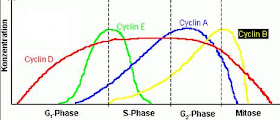Genetic fingerprints can track drug resistance in malaria parasites :
Resistance to the frontline malaria drug artemisinin can be
identified by surveying the genomes of malaria parasite populations, a
worldwide research collaboration has shown.
Genetic fingerprinting has been able to detect strains of drug-resistant malaria parasites in Western Cambodia.
The effectiveness of artemisinin – this key drug against malaria – is
weakening, threatening hundreds of thousands of lives. It is a major
objective of the World Health Organization to stop the spread of malaria
parasites that are resistant to drugs.
 The team, led by researchers at the University of Oxford and the
Wellcome Trust Sanger Institute, discovered multiple strains of the
malaria-causing parasite Plasmodium falciparum that appear to be rapidly
expanding throughout the local parasite population in Western Cambodia,
a known hotspot for drug resistance. These strains have emerged
recently and are all artemisinin-resistant.
The team, led by researchers at the University of Oxford and the
Wellcome Trust Sanger Institute, discovered multiple strains of the
malaria-causing parasite Plasmodium falciparum that appear to be rapidly
expanding throughout the local parasite population in Western Cambodia,
a known hotspot for drug resistance. These strains have emerged
recently and are all artemisinin-resistant.
The scientists were able to characterise distinct genetic patterns or
'fingerprints' for each of the strains, showing the approach offers a
rapid and novel way to detect and track the global emergence of drug
resistance. Their findings provide deep insights into how resistance
emerges and is maintained by certain parasite populations.
The international group used new genome sequencing technologies to
investigate how genetic monitoring of malaria on a large scale could be
used to track drug resistance. They sequenced the entire DNA of malaria
parasites in over 800 samples from Africa and from South East Asia.
'Our survey of genetic variation showed that Western Cambodian
malaria parasites had a population structure that was strikingly
different to those of the other countries we analysed,' says Professor
Dominic Kwiatkowski, senior author of the paper from the University of
Oxford and the Wellcome Trust Sanger Institute near Cambridge.
'Different not just from countries in Africa, but also different from
malaria parasite populations in neighbouring Thailand, Vietnam, and even
Eastern Cambodia.
Artemisinin resistance is an emergency which could derail all the
good work of global malaria control in recent years. We desperately need
methods to track it in order to contain it, and molecular
fingerprinting provides this.
Professor Nicholas White
'Initially, we thought our findings might be just an anomaly. But
when we investigated further we found three distinct sub-populations of
drug-resistant parasites that differ not only from the susceptible
parasites, but also from one another. It is as if there are different
ethnic groups of artemisinin-resistant parasites inhabiting the same
region.'
One important benefit of this genetic approach is that, even without
knowing the precise genetic causes of drug resistance, researchers are
able to quickly identify resistant strains – an important step towards
effective worldwide surveillance.
'Public health authorities need rapid and efficient ways to
genetically detect drug-resistant parasites in order to track their
emergence and spread,' says Dr Olivo Miotto, first author of the paper
from Oxford University, Mahidol University in Thailand, and the MRC
Centre for Genomics and Global Health. 'Our approach allows us to
identify emerging populations of artemisinin-resistant parasites, and
monitor their spread and evolution in real time. This knowledge will
play a key role in informing strategic health planning and malaria
elimination efforts.'
Western Cambodia appears to be a hotspot for the emergence of drug
resistance, but it is not fully known why. Resistance to other malaria
drugs, namely chloroquine and sulfadoxine/pyrimethamine, first developed
in Southeast Asia before spreading to Africa. This study offers new
leads that the consortium will be pursuing as to why drug resistance
arises more readily in some locations when compared with others.
'Whilst we have not yet identified the precise mechanism of action or
resistance to artemisinin, this research represents substantial
progress in that direction,' says Professor Nicholas White of Oxford
University and Mahidol University. 'It also provides an important
insight into why antimalarial drug resistance (previously to chloroquine
and antifols, and now to artemisinin) arises in Western Cambodia.'
He adds: 'Artemisinin resistance is an emergency which could derail
all the good work of global malaria control in recent years. We
desperately need methods to track it in order to contain it, and
molecular fingerprinting provides this.'






















